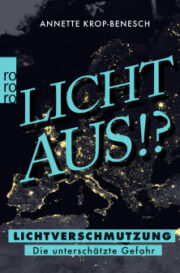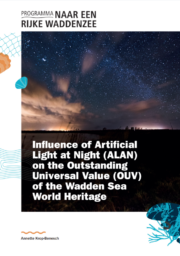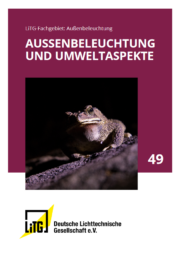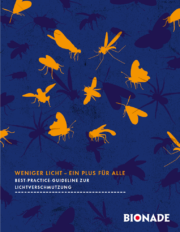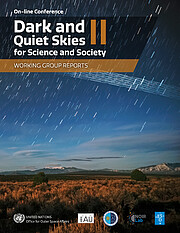Selected Publications
My book Licht aus!?, published by Rowohlt in October 2019 and available in German and Korean, is an introduction into a complex topic, summarising all important aspects. It is about understanding why we need to reduce light pollution and how better lighting could be better.
The book includes interviews with experts and affected people. It gives personal experiences with light and darkness, as well as information from research. Anyone who works with light can find information about other specialist areas here. I hope that poeple who are affected by artificial light will find some tools to talk about light and to campaign for more compatible lighting.
Protecting the Darkness: Why we need to rethink our light at night! Artikel im Trilateral Wadden Sea Cooperation Annual Report 2023
Report on Artificial Light at Night and the Wadden Sea World Heritage, herausgegeben von Programme towards a Rich Wadden Sea.
LiTG-Publikation Nr. 49: Außenbeleuchtung und Umweltaspekte
Ko-Autorin des Dark and Quiet Skies II for Science and Society Working Group Reports 2021, organised by the United Nations Office for Outer Space Affairs (UNOOSA), the International Astronomical Union (IAU) and the Instituto de Astrofísica de Canarias (IAC).
Scientific papers on light
Krop-Benesch, A.R. 2023. Auswirkungen nächtlicher Außenbeleuchtung auf den Menschen. Natur und Landschaft. 98 (9/10): 468-473.
Krop-Benesch, A.R. 2023: Public light planning: finding the right balance. Abstract booklet of the 8th Conference on Artificial Light at Night (ALAN2023)
Krop-Benesch, A. 2023. Außenbeleuchtung und Anwohner – zwischen Sicherheitsempfinden und Störfaktor. Tagungsband LICHT2023: 347-355
Aulsebrook, A.E., Jechow, A., Krop-Benesch, A., Kyba, C.C.M., Longcore, T., Perkin, E.K., van Grunsven, R.H.A. 2022. Nocturnal lighting in animal research should be replicable and reflect relevant ecological conditions. Biological Letters 18: 20220035.
Essays
“Keine Rettung für den Nachthimmel” Chapter in the exhibition volume Light My Fire – Mensch Macht Feuer, 2022/23 at the Museum for Archeology Hamburg
“Segen und Fluch: Künstliches Licht zwischen Lichtverschmutzung und Motor der Moderne” Chapter in the exhibition volume Macht!Licht!, 2022, at the Art Museum Wolfsburg.
Die dunkle Seite des Lichts, essay at the Rotary Magazin Germany, Dezember 2019.
Das Verschwinden der Nacht, article in Böll.Thema 3/2016: Biologische Vielfalt
The loss of the Night – Interdisciplinary Research on Light Pollution, Article in the IDA Magazine Nightscape
Information booklet of the Forschungsverbundes Verlust der Nacht (German)
Article on chronobiology, page 8, Editor of the booklet: Annette Krop-Benesch
Board Game
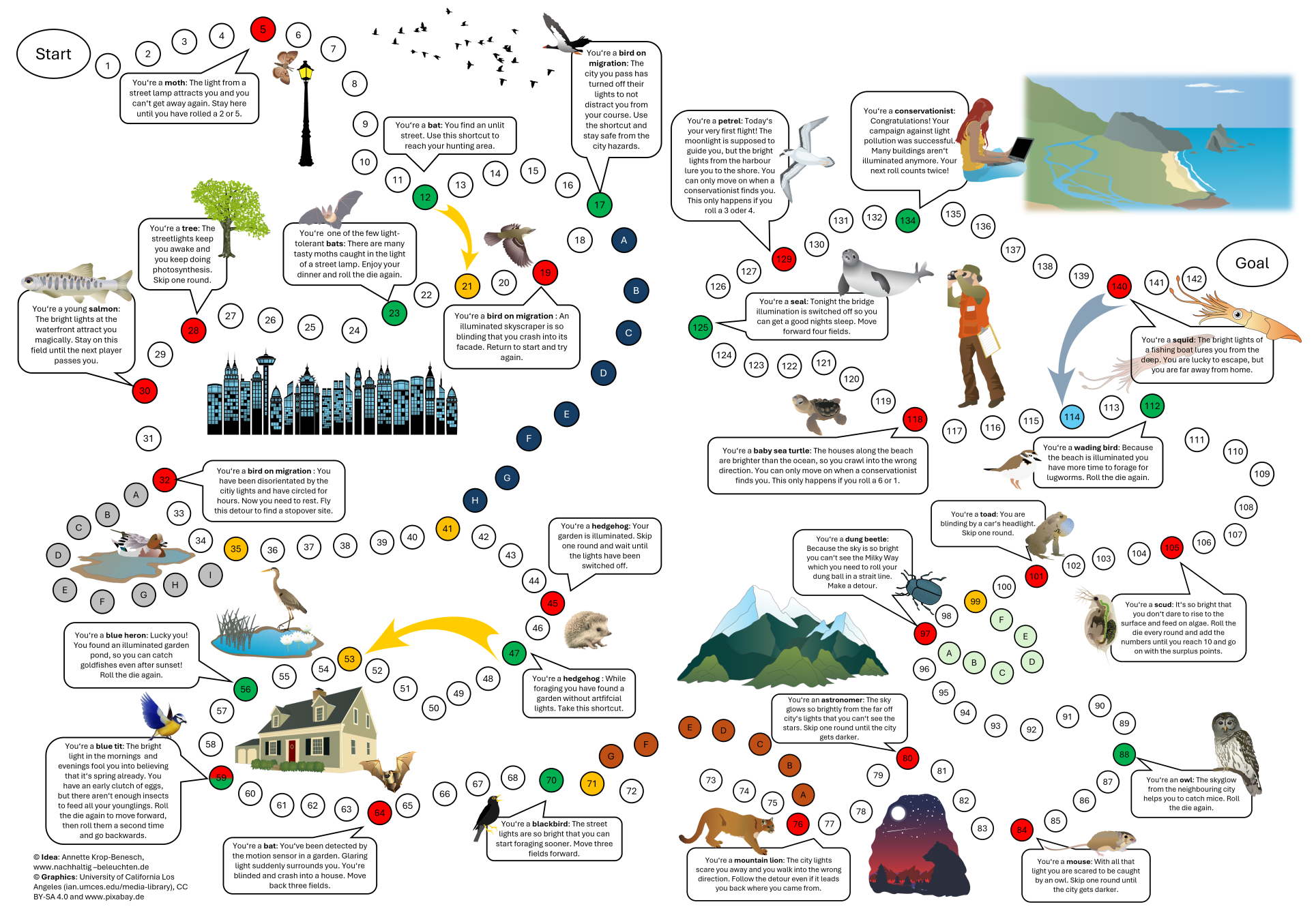
Together with my children Benjamin (10) and Viviane (8) have I designed the board game A journey through the bright night on the impact of light pollution on nature. It is available in several languages and can be downloaded without costs from my blog.
Film
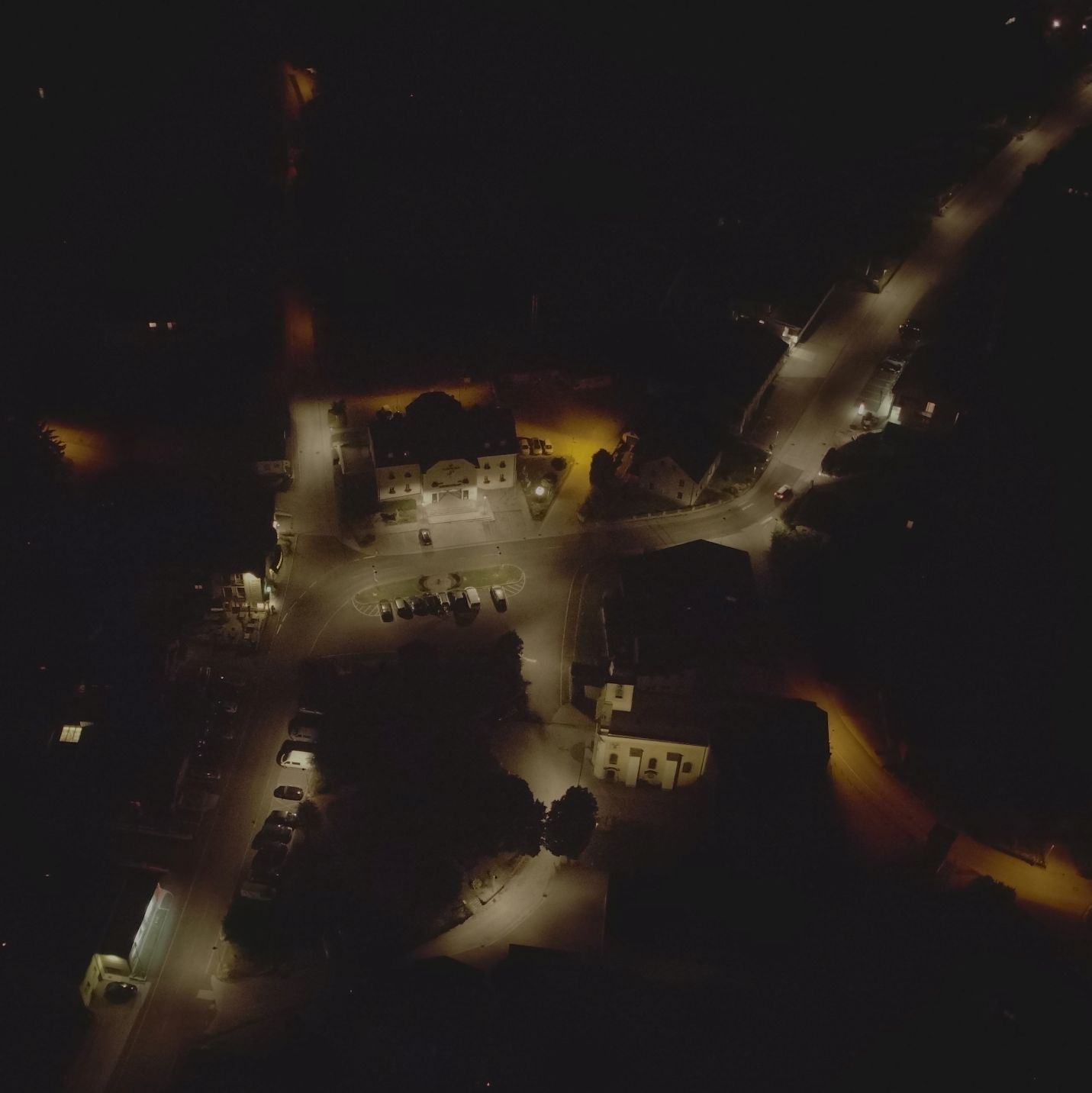
Land Oberösterreich: Licht im Einklang mit Mensch und Natur – Zukunftsweisende Außenbeleuchtung statt Lichtverschmutzung. Dokumentation über die Umrüstung Upper Austria: Light in Harmony with Human and Nature. Documentation about a coversion of two villages according to the guideline of the Austrian Government.
Script: Raffael Portugal (Flightkinetic) & Annette Krop-Benesch
Camera: Raffael Portugal (Flightkinetic)
Text: Annette Krop-Benesch
Videos
Board game “Journey through the bright night”. An introduction by Annette Krop-Benesch
LIFA Light in Fine Arts: Kolloquium VIII Wolfsburg | 25.03.2022: Segen und Fluch: Künstliches
Licht zwischen Lichtverschmutzung und Motor der Moderne
2022 | Fachtagung Natur am Bau – #9 | Nachtfreundliche Beleuchtung
(Nicht nur) Insekten brauchen dunkle Nächte. Vortrag bei Biodiversity in Good Company.
DarkSky Massachusetts: Presentation at the Annual Meeting 2021. Artificial Light at Night: A threat to the natural world
Make Light Matter: Working with chronotypes to live your fullest life
Naturparke Luxemburg: Die Wichtigkeit der natürlich dunklen Nacht
Podcasts and Radio-Interviews
229. Mai 2025: Wie Lichtverschmutzung Mensch und Natur beeinflusst: Dr. Annette Krop-Benesch klärt auf. Podcast der Villa Fohrde Bildungs- und Kulturhaus e.V.
14. Januar 2025: Macht Lichtverschmutzung uns krank? Handelsblatt Podcast zusammen mit Christopher Kyba
11. Mai 2022: Bayern 1: Was kann ich gegen Lichtverschmutzung tun? zusammen mit Eva Weiß- von der Nachtlicht-Bühne, Manuel Philip von Paten der Nacht.
31. Januar 2020: Doppelkopf: Am Tisch mit Annette Krop-Benesch, “Lichtreinigerin”
12. Dezember 2019: Radiointerview bei Deutschlandfunk Kultur Studio 9.
24. Juni 2013: Krebs durch zu wenig Schlaf, Interview mit dem Deutschlandfunk
Reports on my projects
2013: Weißt du wieviel Sternlein stehen? Bericht von citizenscience:germany über die App „Verlust der Nacht”
24. April 2013: Wie hell ist die Nacht? Bericht der Freien Universität Berlin über die App „Verlust der Nacht”
18. Dezember 2014: Die Nacht zum Tage machen Bericht über Lichtverschmutzung des SRF
Other scientific publications
Krop-Benesch, A.R., Berger, A., Hofer, H. & Heurich, M. 2013. Long-term measurements of roe deer (Capreolus capreolus) (Mammalia: Cervidae) activity using two-axis accelerometers in GPS-collars. Italian Journal of Zoology.
Benesch, A.R., Berger, A., Streich, J. & Scheibe, K. 2011. Activity Pattern – User’s Manual. Vectronic Aerospace. 139 S.
Benesch, A.R., Munro, U., Krop, T., & Fleissner, G. 2009. Seasonal changes in activity and behaviour of captive Koalas Phascolarctos cinereus. Biological Rhythm Research 41(4):289-304.
Benesch, A.R., Munro, U., Schratter, D. & Fleissner, G. 2008. Chronobiology of koalas (Phascolarctos cinereus) in zoological gardens. Australian Mammalogy 29(2): 237-240.
Benesch, A. R. 2007. Chronoethological assessment of well-being and husbandry in captive koalas Phascolarctos cinereus, Goldfuss 1817. Doktorarbeit. Johann-Wolfgang-Goethe-Universität Frankfurt am Main. 271 Seiten.
Benesch, A.R. & Fleissner, G. 2006. Chronoethology in Zoo Animals: a method to monitor behaviour and well-being. Circadian Activity Rhythms in Koalas (Phascolarctos cinereus) in Zoological Gardens. EAZA Research Committee Newsletter 10 (September 2006): 80-84.
Benesch, A.R. & Hilsberg, S. 2006. Oberflächentemperaturen bei Zebrastreifen – Warum haben Zebras Streifen? Natur und Museum 136(2): 49-56.
Benesch, A.R., Ehlert, K., Hofmann, M., Holland, R., Kandler, C., Luedicke, T., Ratzel, S., Ruch, T., Schubert, C., Sicks, F., Becker, M., Fleissner, Ge. & Fleissner Gü. 2005. The influence of husbandry on the circadian activity rhythms of zoo animals. Mammalian Biology 70S: 9-10. (Abstract)
Benesch, A.R. & Hilsberg, S. 2003. Infrarot-thermographische Untersuchungen der Oberflächentemperatur bei Zebras. Der Zoologische Garten N.F. 73(2): 1-9.
Benesch, A.R. & Withers, P.C. 2002. Burrowing performance and the role of limb reduction in Lerista. Senckenbergiana lethea 82(1): 103-110.
Nagel, D., Hilsberg, S., Benesch, A.R. & Scholz, J. 2003. The clan of the cave lion: Functional morphology and fur patterns in recent and fossil Panthera species. Scripta Geologica 126: 227-241.
Stiegler et al. 2024. Mammals show faster recovery from capture and tagging in human-disturbed landscapes. Nature Communications 15(1): 8079
